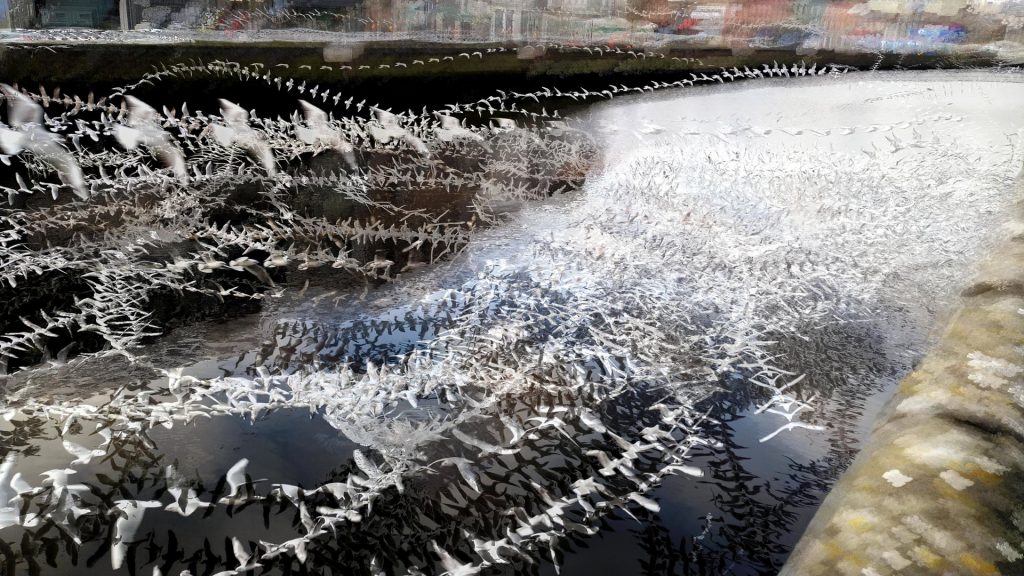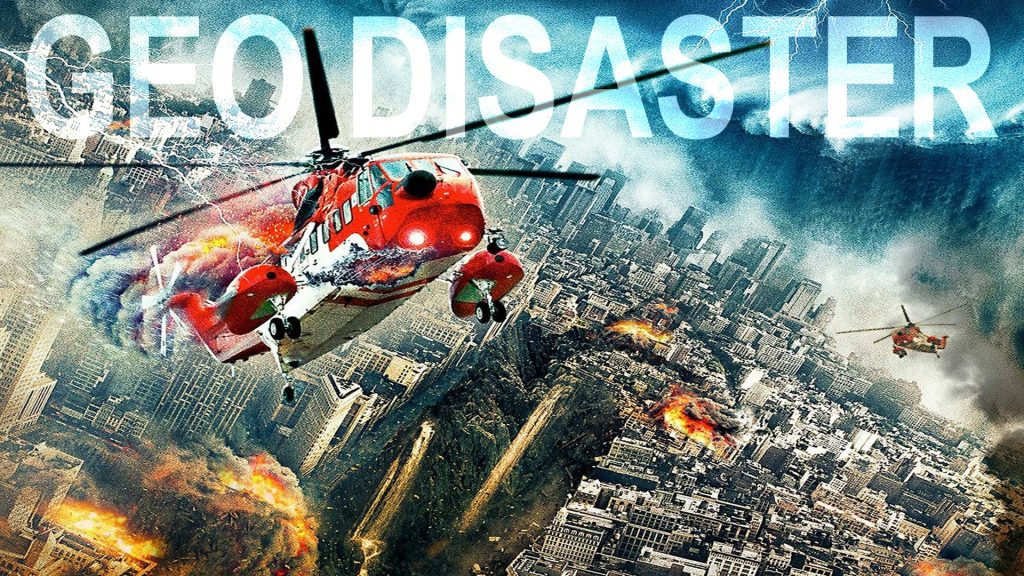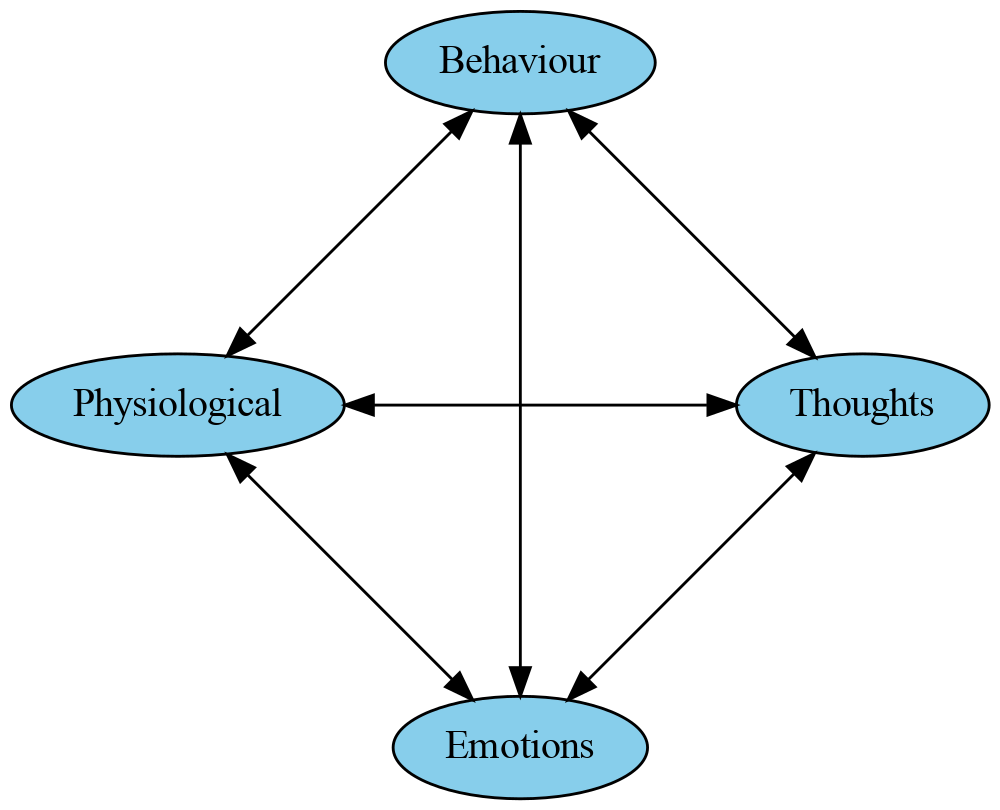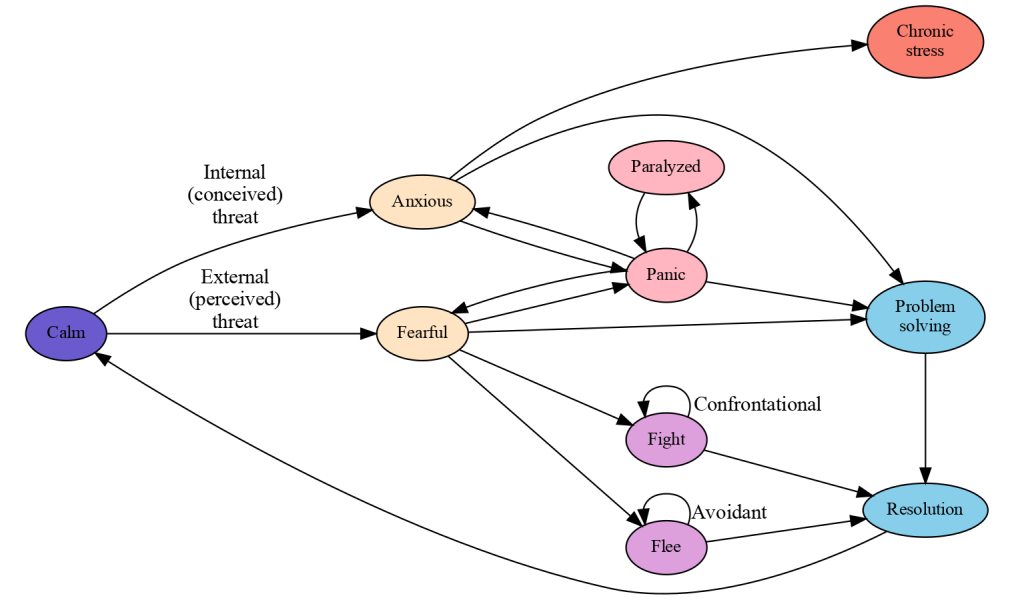Ian Dury wryly noted that anxiety crippled (his word) him more than polio and in his wonderful song “Crippled with Nerves”, anxiety is both disabling and a potential loss of social opportunity – but it’s a pain worth enduring for a sufficiently rewarding end result (marriage and two children, in his case). I’d like to emphasise the role of choice and (social) reward.
Seeing an escape

Imagine how much a panicked bird might hurt itself (and us) if we didn’t show it the way out of a room it felt trapped in. Trying to catch and release the bird may do more harm than good – and teaches it nothing good. Switching off the lights and opening a window or door restores a choice to the trapped bird.
Nothing works, and everything works:
- Stim toys
- Exercise
- 4-7-8 breathing
- Journey rehearsal (Google Streetview) and support (Google Maps for buses)
- Mindfulness
- Progressive muscular relaxation
- Anti-anxiety and other medication
- Avoiding stressful situations
All of these take practice, rehearsal and integration with real anxiety-provoking incidents.
There is no “cure” for anxiety – and there should not be – but there is no 100% (or even 50%) effective coping mechanism either. I felt like a failure in CBT (and reminded of it in a recent presentation) where professionals suggested their techniques would work, if only I tried hard enough.
- Some stress is good stress – stress is a motivator and a natural response to danger
- An episode of anxiety is not fatal
- Avoiding social anxiety also limits social opportunity, and so many other opportunities for education, leisure and health
You can’t relieve someone else’s anxiety, and being anxious is not naughty (so you can’t punish or shame it away either). The anxious person (like the trapped bird) has to see their own escape route.
A recent experience of anxiety leading to
panic

I got stuck in the lift at #AsIAmConf19: the buttons didn’t work, because the lift needs a room card, but the room card didn’t work – the (tiny) instructions said “insert-and-remove”, but the lift shot to 5th floor and then basement “staff only” area while I was trying to read the instructions…
A staff member said that lift didn’t go to ground floor and showed me stairs, which ALSO had no exit to ground floor! I felt like I was going to get stuck in the basement for ever, never find reception and get hunted down by angry chefs…
So I stood in the stairwell and waited until I calmed down. I didn’t die and only two total strangers (who I hope I will never meet again) saw me freaking out. I made my way to the 1st floor, found a lift that DID go to ground floor, and got on with my day a little more tired.
- (meanwhile, in the world outside the lift, I imagine, “Geo-Disaster” awaits me)
- Do not minimise anxious people’s fears, no matter how outlandish – they feel real
- Do not assume what works for some or most people will work for everyone, or in all situations
- (I feel completely unable to help my 18-year-old with anxiety – it feels too unique to each anxious person)
- Give space and time
- Keep ‘helpful’ strangers back (especially gawpers, and security staff)
- Use prompts to help recall things that help, e.g. using anxious incidents they got through before
Hot cross bun model

One thing I took from many, many hours of therapy was that in the Thoughts, Emotions, Physiological & Behaviour “Hot Cross Bun” model of anxiety/panic, snipping ANY one of those links does wonders to re-establish a sense of control – e.g. pause and breathe to snip the physiology links.
You can’t choose how you feel, but you can choose how you respond (DBT) – you choose which works for you, or works for you today.
Paths to calm

I made a network diagram of my own fight-or-flight routes through fear and anxiety into the endless circling paralysis of panic, which can only be exited by problem-solving and / or resolution. There are loads of positive-feedback paths to keep me panicked and only one out.
Moving from fear or anxiety to problem solving / resolution as early as possible limits the possibility of chronic anxiety (which is the route to depression – I’ve been there, its horrible). Converting anxiety into problem-solving uses my systematizing skills and re-establishes a sense of control through choice.
Avoidance leads to more anxiety about events, before any fear-provoking stimulus. Avoiding lifts because they might crash or avoiding the bus because you might get called a faggot* reinforces anxious thoughts, whereas taking the lift or bus desensitises the fear and increases opportunity.
So there is no magic cure to prevent panic, although hard work can reduce the frequency, but panic doesn’t kill, you get through the other side alive. And avoidance does you no favours.
* As a post-script, I was verbally abused on the way home after the event where I presented this talk, and I get verbal abuse about once a week that varies from inconsequential to very frightening. People who abuse me usually fall back on homophobic (“faggot”, “queer”) and racist (“go back to your own country”, “you don’t belong here”) abuse. This was at the more scary end – a man shouted “The courts shouldn’t let scum like you out. And remember, we’re s’coming [scumming] for you” at me and then spat down my back.
What a hateful experience you had on the way home Stuart .
Thank you for sharing your very pragmatic approach to anxiety here
I think this is the sharp end of the homelessness, housing and health failings that were centred in the election. There are lots of angry people with inadequate resources who take out their frustration wherever they can. But politicians are using so much hate speech and hateful concepts, which legitimises hate speech for everyone else.